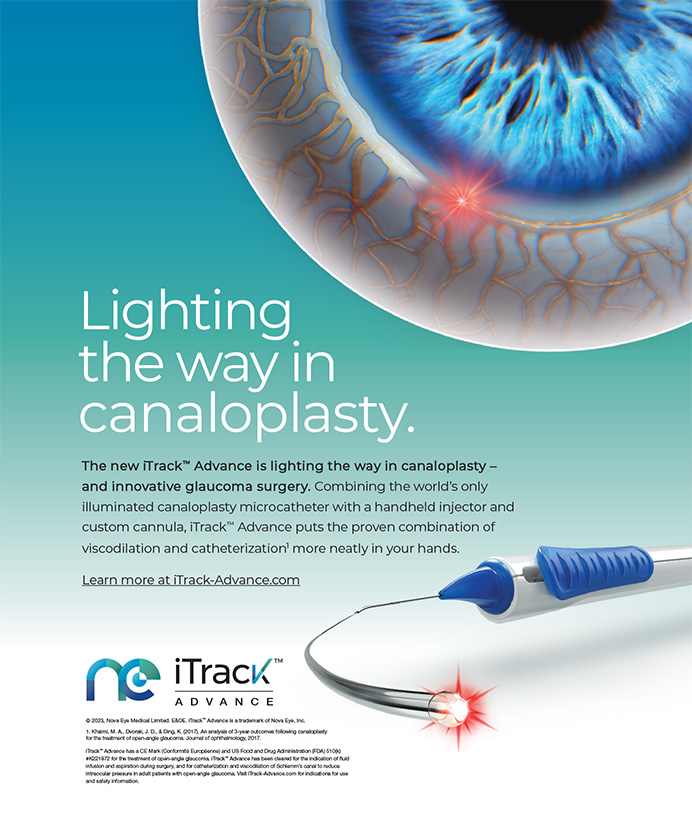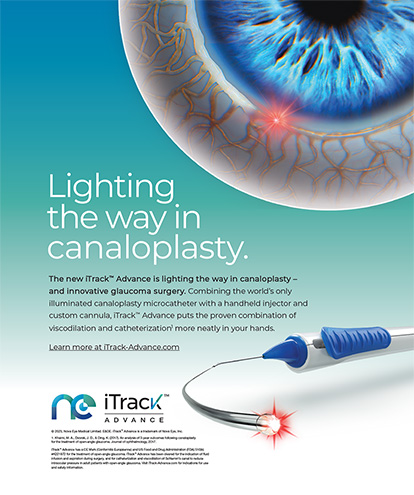The “Inside Eyetube.net” column is soaring into a new decade with lots of interesting tips and tricks for choosing an IOL, improving your phaco technique, entering the cross-linking world, and staying up to date on the latest technologies for anterior and posterior segment surgery. Let Eyetube.net lead the way as we begin this journey into a new enterprise of cataract and refractive surgery.
LAST IOL’S RELEASE
Dana Weinkle, MD, shares his reasons for using the Akreos AO Microincision IOL (Akreos MICS; Bausch + Lomb, Rochester, New York) for microincisional cataract surgery. He mentions the lens’ flexible hydrophilic acrylic material, unique design, exceptional centration and stability, advanced optics, and low levels of posterior capsular opacification as the major benefits of this latest generation of the Akreos family (eyetube.net/?v=vigoh).
A special series on the Crystalens AO (Bausch + Lomb), shares the expertise of Jay S. Pepose, MD, PhD; Guy M. Kezirian, MD; Stephen G. Slade, MD; Steven J. Dell, MD; John F. Doane, MD; and Uday Devgan, MD. This complete review of the IOL includes commentary on long-term results, optical performance, support of far and near visual acuity, and astigmatic correction (http://eyetube.net/series/crystalensao2011/crystalens-ao-pepose-1/).
Finally, in “Easy Insertion With Pre-Loaded IOLs” (eyetube.net/?v=ducha), Zia ul Mazhry, MD, compares the injection techniques for three new preloaded IOL systems—PhysIOL (Liége, Belgium), Quatrix (Croma-Pharma Gesellschaft GmbH, Leobendorf, Austria), and the XL Stabi ZO (Carl Zeiss Meditec, Inc., Jena, Germany) (products not available in the US).
ORBITAL PHACO TIPS
In “Tear Film Phaco,” Christopher Starr, MD, explains how to eradicate bothersome and potentially dangerous ocular surface meibum and debris prior to cataract surgery. Before making the incision, he uses the phaco tip in the irrigating mode to wash out the corneal meibomian debris (eyetube.net/?v=smibi). In another video, James Lewis, MD, presents a side-by-side comparison of his early experiences with the Packard 0.7-mm phaco tip needle versus the 1.1-mm phaco needle (both from MicroSurgical Technology, Redmond, WA) to illustrate their efficiency (Figure 1) (eyetube.net/?v=wanev).
ARTIFICIAL INTELLIGENCE
Sri Ganesh, MD, demonstrates how the stereo coaxial illumination of the Opmi Lumera 700 (Carl Zeiss Meditec, Inc.) microscope provides a good red reflex during capsulorhexis. This also works in the eye of a patient who presents with a dense corneal scar from a chemical burn and a cataractous lens (eyetube.net/?v=horil).
“Navigated Grid Laser Treatment After Bevacizumab Failure in BRV” documents a novel rescue in a case of long-term bevacizumab injection failure with retinal vein occlusions. The video appears courtesy of Alexandra Hoeh, MD; Mira Ruppenstein, MD; Stefan Dithmar, MD; and Thomas Ach, MD. All from the University of Heidelberg, the surgeons use the Navilas laser system (OD-OS Inc., San Francisco, CA)—a new grid laser device with an added eye-tracker function—with which treatment can be planned directly on the fluorescein angiogram. The navigated grid laser treatment appears to be safe and accurate and stabilizes vision and reduces macular edema, as measured by optical coherence tomography (eyetube.net/?v=basco).
GRAVITATING TOWARD INTELLECT
Parag A. Majmudar, MD, shares his version of the Descemet stripping with endothelial keratoplasty suture pull-through technique. He inserts the graft atraumatically through the anterior chamber. He then unfolds the graft, ties the suture ends, and rotates the knot outside the graft. Dr. Majmudar recommends the suture because, if the graft dislocates, a suture prevents it from free-floating in the anterior chamber (Figure 2) (eyetube.net/?v=wegig).
Sheraz M. Daya, MD, FACP, FRCS, FRCOphth, demonstrates a corneal collagen cross-linking procedure with the Daya Disruptor (Duckworth & Kent, Hertfordshire, England). The metal instrument creates pockmarks in the epithelium that the riboflavin can pass through to the cornea. The primary goals are to maintain as much live epithelium as possible, promote riboflavin’s penetration, and reduce side effects and patients’ postoperative pain. The cross-linking procedure is investigational in the United States.
CONCLUSION
As evident in the videos mentioned herein, innovation comes directly from the continuous need for solutions to the challenges presented to us every day. Watching videos such as these on Eyetube.net can prepare surgeons for their next surgical adventure.
Section Editor Elena Albé, MD, is a consultant in the Department of Ophthalmology, Cornea Service, Istituto Clinico Humanitas Ophthalmology Clinic, Milan, Italy. She acknowledged no financial interest in the products or companies mentioned herein. Dr. Albé may be reached at +39 0331 441721; elena.albe@gmail.com.
Section Editor Richard M. Awdeh, MD, is the director of technology transfer and innovation and an assistant professor of ophthalmology at the Bascom Palmer Eye Institute, Miami. He is a consultant to and speaker for Bausch + Lomb. Dr. Awdeh may be reached at (305) 326-6000; rawdeh@med.miami.edu.
Section Editor William B. Trattler, MD, is the director of cornea at the Center for Excellence in Eye Care, Miami, and the chief medical editor of Eyetube.net. He has received research support from Bausch + Lomb. Dr. Trattler may be reached at (305) 598-2020; wtrattler@earthlink.net.


